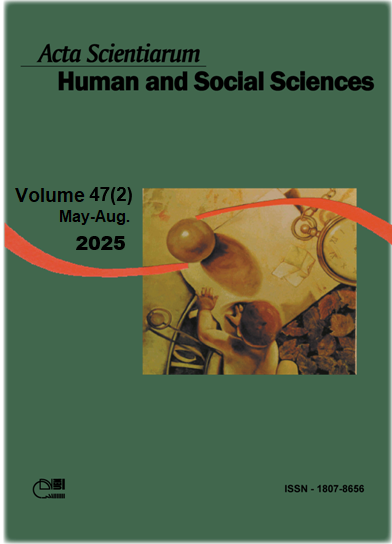Multilingual reception: reflections on clinical and psychoanalytic care of immigrants
Abstract
Foreign languages have been present in psychoanalysis offices since its beginnings. Several historical events, such as the First and Second World Wars, forced psychoanalysts to attend to immigrant patients or even establish their practices in other countries. However, few publications on the subject have been produced, even though much can be theoretically questioned about the technical impacts of conducting sessions or welcoming patients in languages other than their mother tongues. Given the complexity of the topic and the scarcity of research on clinical practice in a foreign language, this study aims to investigate how psychoanalysts make sense of the experience of providing care in foreign languages. To this end, five experienced clinical psychoanalysts who treat patients under these conditions were interviewed. From the content analysis of these interviews (Bardin, 1977), three main themes were chosen: the possibility of analyzing in a foreign language; the mother tongue; and the transference dimension in this setting. In conclusion, it was possible to delimit and discuss some possibilities and impasses for clinical care in another language. It is emphasized that what is crucial for the establishment of an analytical process is the analyst's subjective availability to listen to and welcome the immigrant, and that linguistic, cultural, transferential, and countertransferential challenges will be part of the clinical management in this condition.
Downloads
References
Amati-Mehler, J., Argentieri, S., & Canestri, J. (2005). A Babel do inconsciente: língua materna e línguas estrangeiras na dimensão psicanalítica (C. Bachi, Trad.). Imago.
Abraham, N., & Torok, M. (1976). Cryptonymie. Le verbier de l’homme aux loups. Aubier-Flammarion.
Baratto, G. (2017). O sujeito barrado do inconsciente: o sujeito do pensamento e do desejo. Psicologia Argumento, 30(69), 239-244.
Bardin, L. (1977). Análise de conteúdo. Edições 70.
Boczkowski, D. (2006). Influence of foreign langages in psychoanalysis. École Pratique des hautes Études en Psichopathologies. https://ephep.com/ressources/diana-kamienny-boczkowski-influence-foreign-languages-psychoanalysis
Buxbaum, E. (1949). The role of a second language in the formation of ego and superego. The Psychoanalytic Quarterly, 18(1), 279-289.
Calligaris, C. (1992). Apresentação - Contardo Calligaris. In C. Melman, Imigrantes: incidências subjetivas das mudanças de língua e país (pp. 9-15). Escuta.
Cavalcanti, L., & de Oliveira, M. (2018). O tema das migrações internacionais na Sociologia no Brasil. Revista Brasileira de Sociologia - RBS, 6(12), 88-113. https://doi.org/10.20336/rbs.235
Cavalcanti, L. (2021). A década de 2010 (2011-2020): dinamismo e mudanças significativas no panorama migratório e de refúgio no Brasil. In L. Cavalcanti, T. Oliveira, & B. G. Silva (Eds.), Relatório Anual 2021 – 2011-2020: uma década de desafios para a imigração e o refúgio no Brasil (pp. 8-23, Série Migrações). Observatório das Migrações Internacionais; Ministério da Justiça e Segurança Pública/Conselho Nacional de Imigração e Coordenação Geral de Imigração Laboral.
Fanon, F. (2020). Pele negra, máscaras brancas. Ubu Editora. (Obra original publicada em 1952)
Freud, S. (1996). Estudos sobre a histeria (1893-1895) (Edição Standard Brasileira das obras psicológicas completas de Sigmund Freud, Vol. II). Imago.
Freud, S. (1980). A dinâmica da transferência. In S. Freud, Edição standard brasileira de obras completas de Sigmund Freud (Vol. XII, pp. 131-143). Imago.
Freud, S. (2017). O chiste e sua relação com o inconsciente. Companhia das Letras.
Freud, S. (2020). O fetichismo. In S. Freud, Neurose, psicose, perversão (pp. 315-326). Autêntica Editora.
Freud, S. (2019). A Interpretação dos sonhos. In S. Freud, Obras Completas (Vol. 4, pp. 13-676). Companhia das Letras.
Gasparini, D. (2010). Língua materna, língua estrangeira e psicanálise: um olhar outro para a questão da aprendizagem. Anais do Seta, 1(4), 226-237. https://core.ac.uk/download/pdf/230217352.pdf
Gay, P. (1995). Freud: uma vida para nosso tempo. Companhia das Letras.
Góis, E., Uyeno, E., Ueno, M., & Genesini, T. (2012). Lalangue, via régia para captura do real. IPLA.
Guerra, A. (2022). Sujeito suposto suspeito: a transferência psicanalítica no sul global. N-1 Edições.
Jerusalinsky, A. (2008). Saber falar: como se adquire a língua?. Vozes.
Krapf, E. (1955). The choice of language in polyglot psychoanalysis. The Psychoanalytic Quarterly, 24(3), 343-357.
Lacan, J. (1985). O seminário, livro 20: mais ainda. Jorge Zahar Ed.
Lacan, J. (1998a). O Aturdito. In J. Lacan, Outros escritos (pp. 448-497). Jorge Zahar.
Lacan, J. (1998b). Função e campo da fala e da linguagem em psicanálise. In J. Lacan, Escritos (pp. 238-322). Jorge Zahar Ed.
Lacan, J. (1998c). O Seminário livro 3, As psicoses (1955-1956). Zahar.
Lacan, J. (2002). O Seminário - Livro 6: O desejo e sua interpretação. Associação Psicanalítica de Porto Alegre.
Lacan, J. (2016). Os não-tolos vagueiam (Seminário 1973-1974). Espaço Moebius de Psicanálise.
Lara Junior, N., Dunker, C. I. L., & Pavón-Cuéllar, D. (2019). Análise lacaniana de discurso: subversão e pesquisa crítica. Appris.
Martins-Borges, L. (2017). Migrações involuntárias e impactos psíquicos: a mediação da cultura. In R. S. Peres, F. Hashimoto, M. M. Casadore, & M. V. Braz (Orgs.), Sujeito contemporâneo. Saúde e trabalho: múltiplos olhares (pp. 169-186). Edufscar.
Martins-Borges, L., Jibrin, M., & Barros, A. F. O. (2015). Clínica intercultural: a escuta da diferença. Contextos Clínicos, 8(2), 186-192. https://doi.org/10.4013/ctc.2015.82.07
Melman, C. (1985). Novos estudos sobre a histeria. Artes Médicas.
Melman, C. (1992). Imigrantes: incidências subjetivas das mudanças de língua e país. Escuta.
Rosa, M. D. (2012). Psicanálise implicada: vicissitudes das práticas clinicopolíticas. Revista da Associação Psicanalítica de Porto Alegre, (41/42), 29-38.
Copyright (c) 2025 Arthur Silvério de Oliveira, Elaine Schmitt Ragnini, Marcela de Andrade Gomes

This work is licensed under a Creative Commons Attribution 4.0 International License.
DECLARATION OF ORIGINALITY AND COPYRIGHTS
I Declare that current article is original and has not been submitted for publication, in part or in whole, to any other national or international journal.
The copyrights belong exclusively to the authors. Published content is licensed under Creative Commons Attribution 4.0 (CC BY 4.0) guidelines, which allows sharing (copy and distribution of the material in any medium or format) and adaptation (remix, transform, and build upon the material) for any purpose, even commercially, under the terms of attribution.
Read this link for further information on how to use CC BY 4.0 properly.























